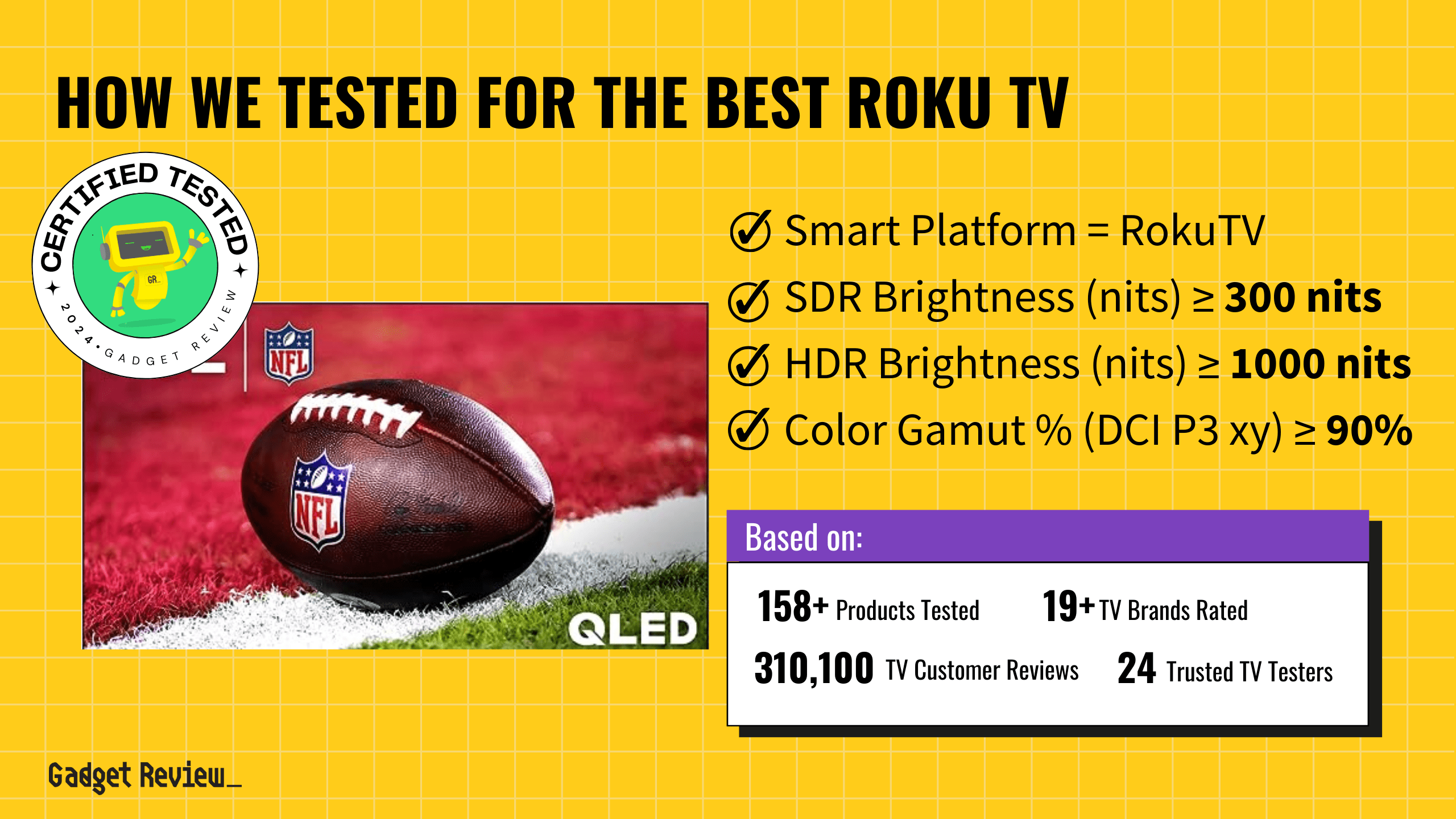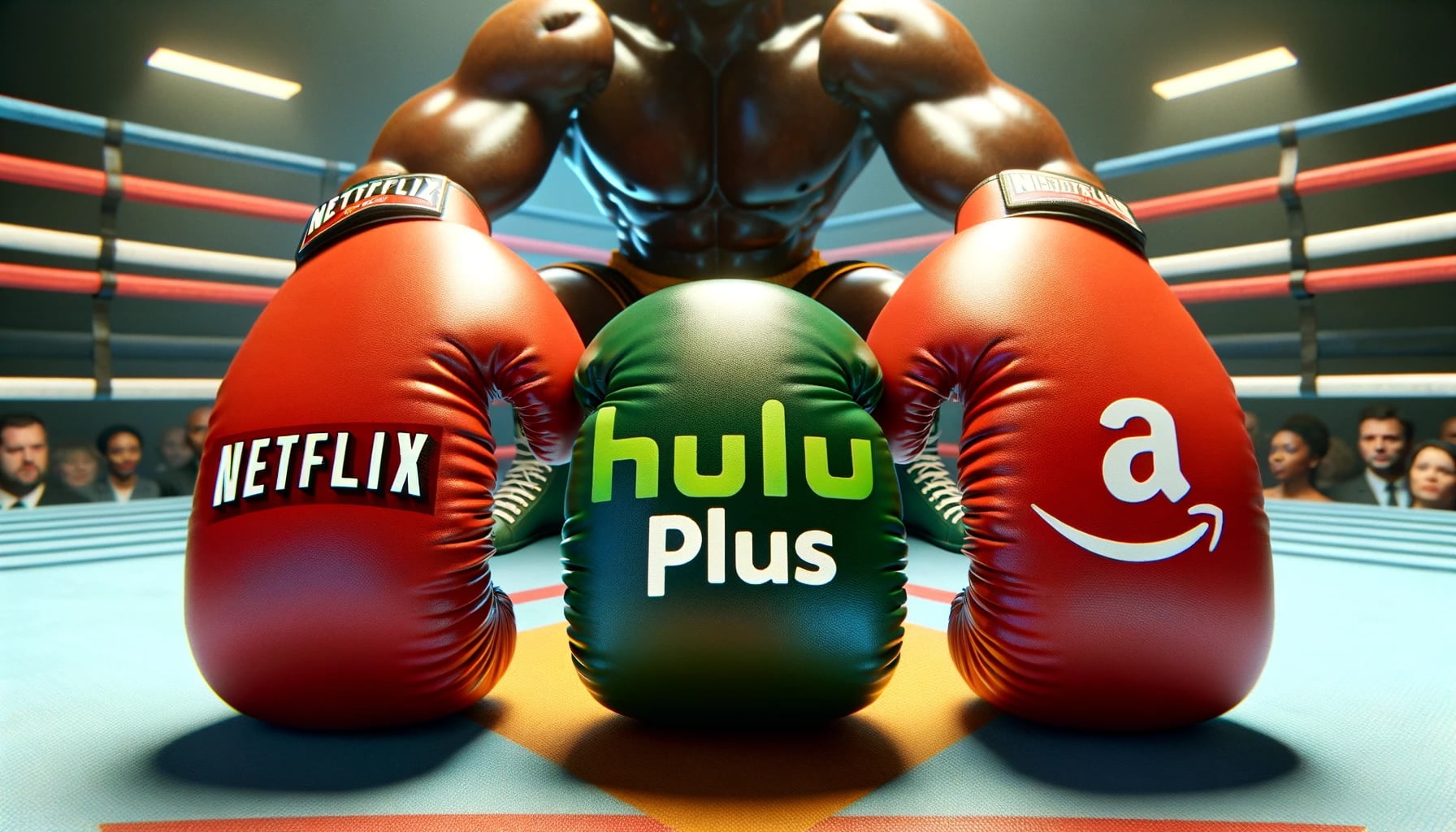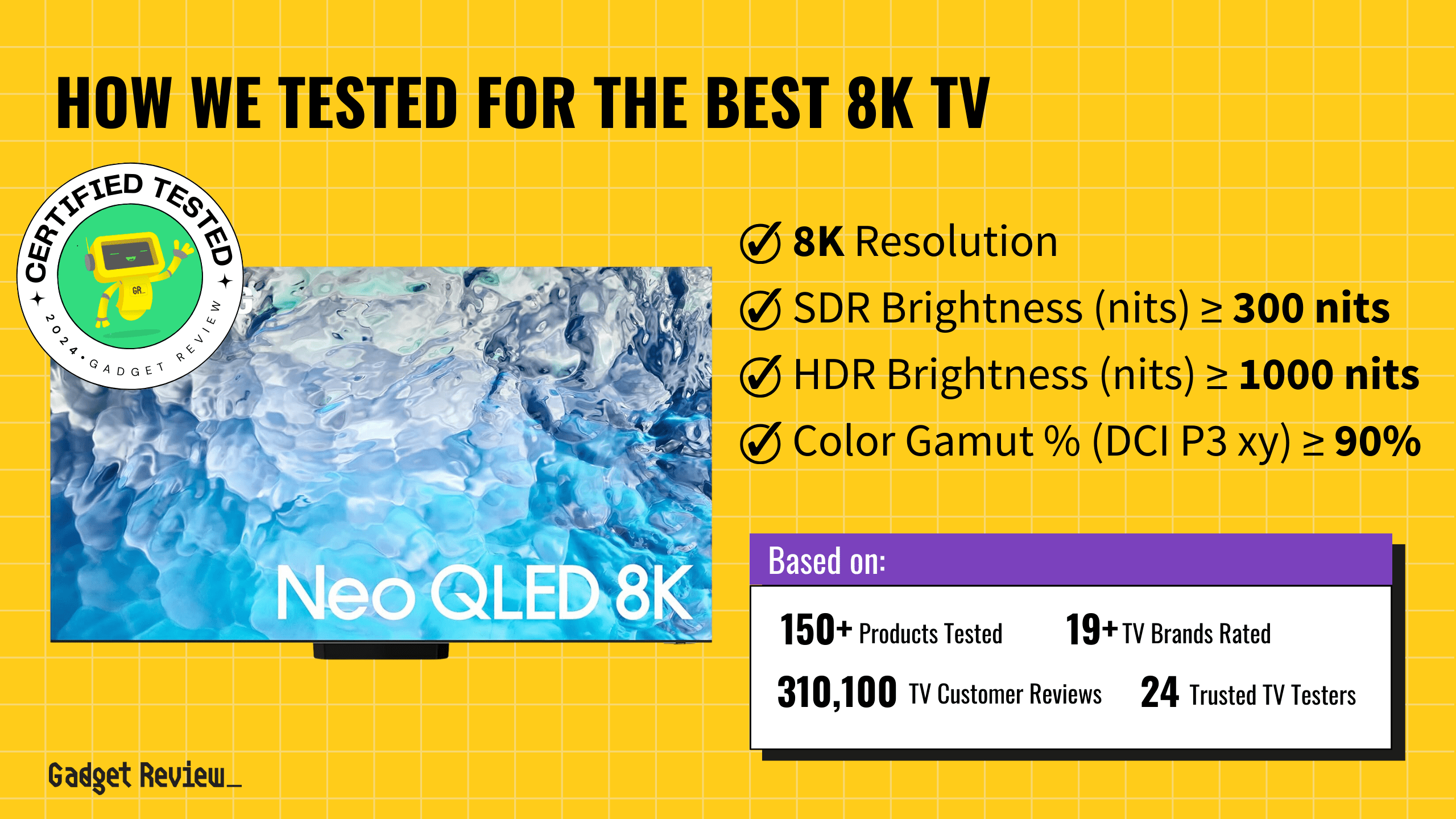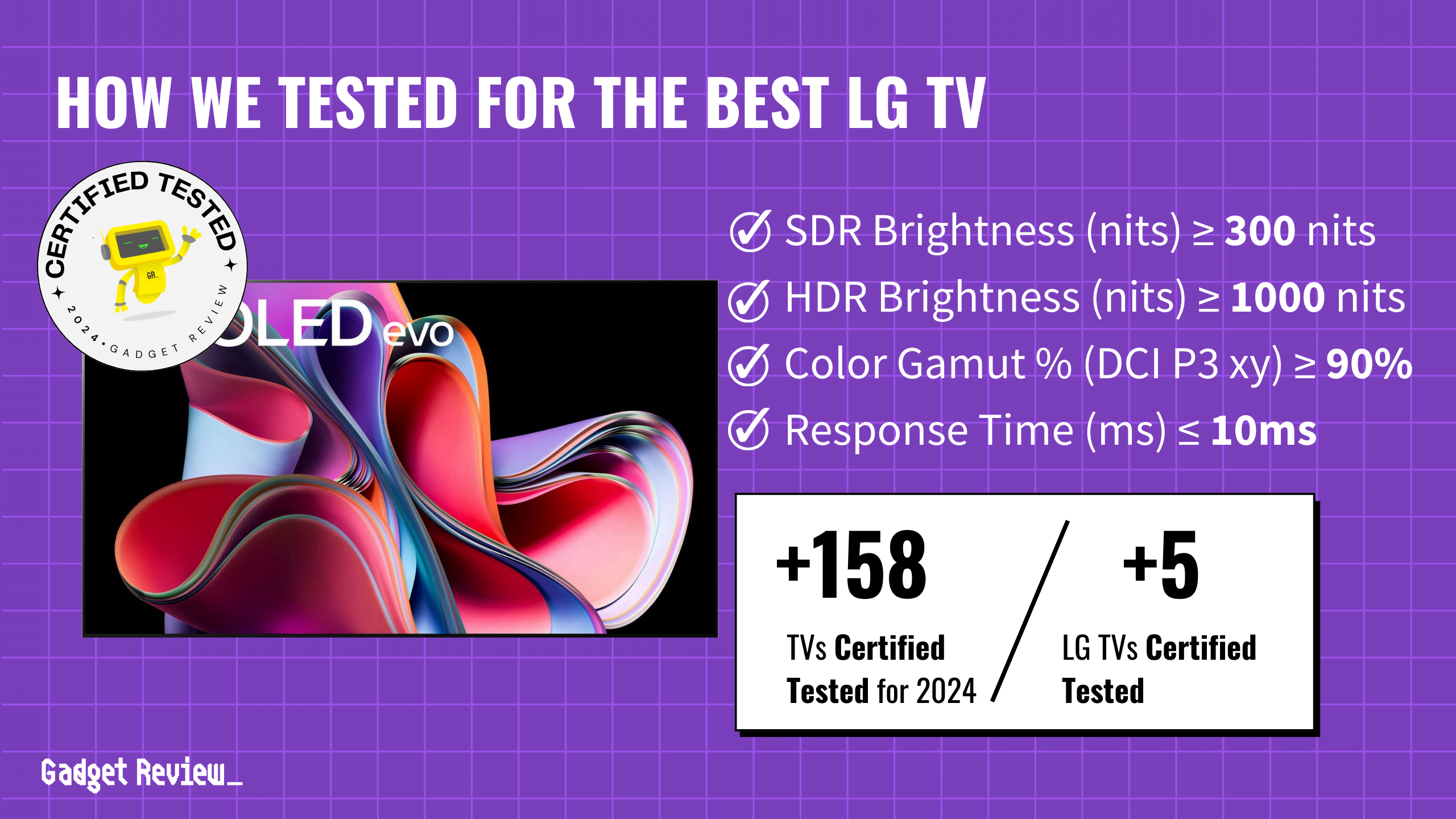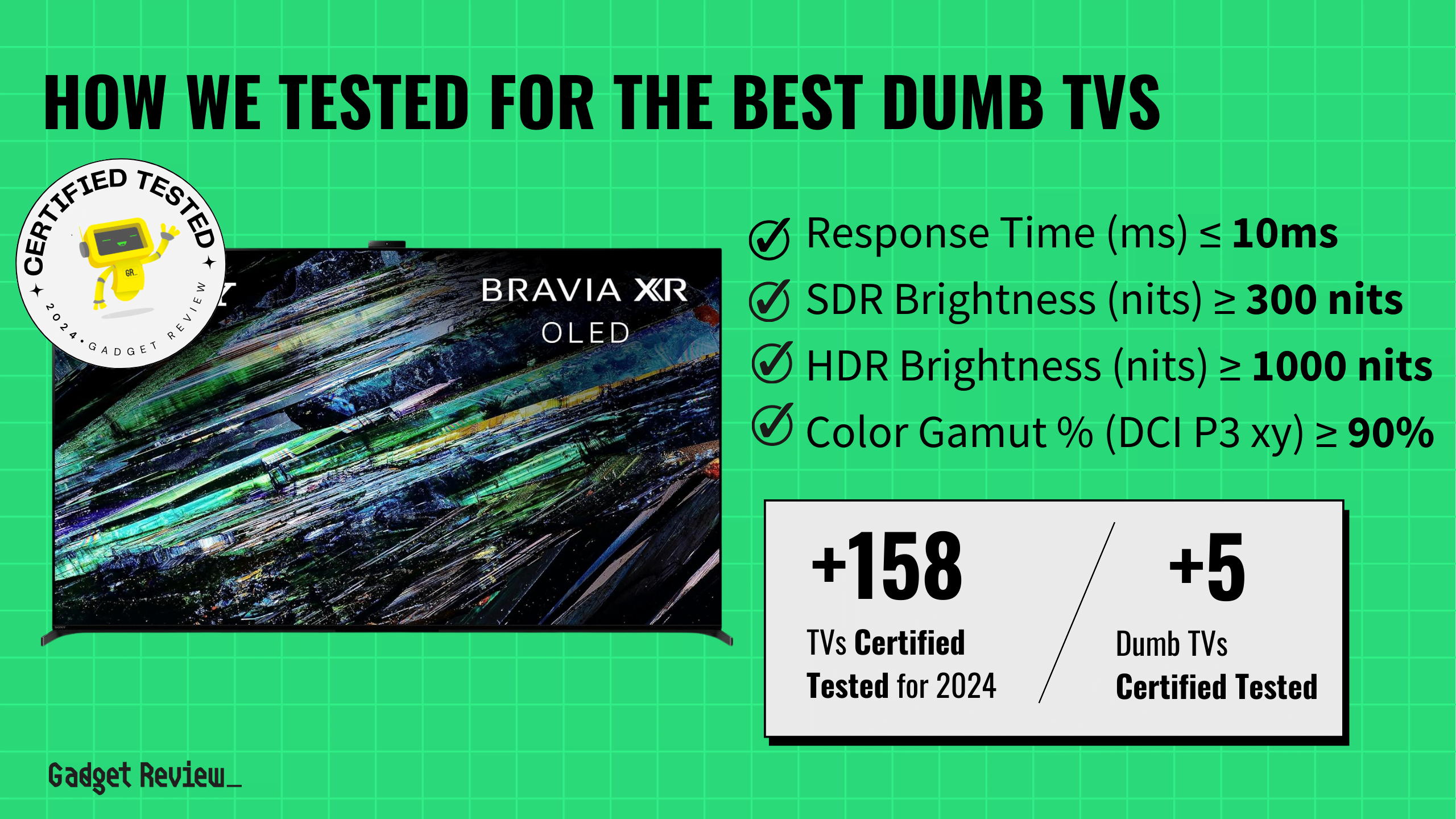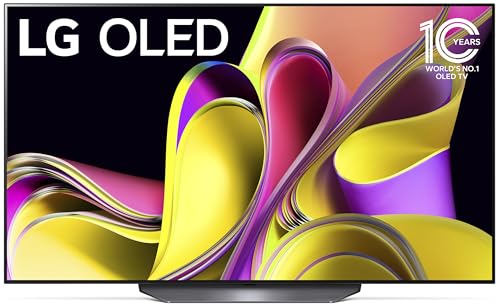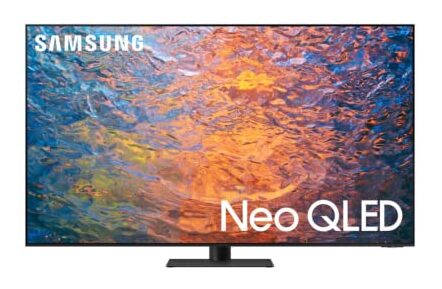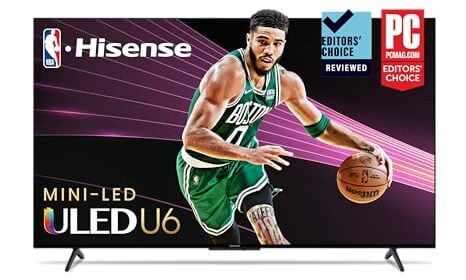If you’re in the market for the best Roku TVs, you’re choosing convenience and a seamless streaming experience. Roku doesn’t manufacture its own TVs, but its intuitive platform is integrated into models from brands like TCL and Hisense, offering a user-friendly interface and access to a vast library of streaming services.
We’ve sifted through the options and found just two TVs that meet our high standards for quality and performance. These selections promise not just the simplicity and smart capabilities Roku is known for, but also the picture and sound quality you shouldn’t have to compromise on. When it comes to the Best TVs, these Roku models offer a perfect blend of convenience and top-notch performance, ensuring an enjoyable viewing experience for all your entertainment needs.
How Did We Rank the Best Roku TVs?
To assess how high or low quality a TV actually is for Roku content, one must evaluate specific testing criteria against reference industry standards. Using our thorough TV Testing Methodology, we determined there are 1 minimum specs and 6 criteria below (3 required, 3 nice to have) that ensure your Roku content looks as good as the creator intended it.
Minimum Specifications
- Smart Platform = RokuTV
Test Criteria
- SDR Brightness: Equal to or greater than 300 nits, ensuring a bright and clear display under any lighting conditions.
- HDR Brightness: 1000 nits or more, to reveal the finest details in high dynamic range content.
- Color Accuracy: At least 90% of the DCI P3 color gamut, providing rich and vibrant colors.
“Nice To Haves”
- Contrast Ratio: 10,000:1 or higher, offering deep blacks and bright whites for an exceptional viewing experience.
- EOTF Accuracy: Delta E less than or equal to 0.018, for precise brightness and contrast across the board.
- Fast Response Time: 10ms or less, ensuring smooth transitions without motion blur.
We’ve redefined TV buying guides, setting us apart from any other site on the planet. Our unique approach combines in-house verification with a comprehensive dataset from over 200+ trusted sites, focusing on key testing metrics to rank the top-rated Roku TVs. Testing data and specs include SDR brightness of at least 300 nits, HDR brightness of 1000 nits and above, and color accuracy with a minimum of 90% DCI P3 color gamut. We aggregate and analyze this data from 158+ TVs, ensuring our recommendations meet your specific needs. For the best Roku TV, this means delivering unparalleled resolution, exceptional brightness and color fidelity for an immersive viewing experience. Our commitment to unbiased reviews is powered by our ‘True Score’ system, targeting low quality and fake reviews. Commissions fund this mission. No bias. No BS.
Latest Updates
- 03/20/2024: Completely and thoroughly overhauled the guide to include the best and latest Roku TVs.
- 11/30/2023: Republished the list to include TVs based on our True Score system.
Top Best Roku TVs For 2025
Prices accurate at the time of publishing
To snag a spot on our list, a Roku TV needs to be capable of producing a vibrant picture with a quick response time and great contrast. If it doesn’t hit these points, we’re not including it!

Best Overall

Runner Up

Best Value

Best Budget

Best Mid-Range

Premium Pick
TCL 8 Series
Best For Home Theater
Ideal for bright rooms with its unmatched SDR and HDR brightness, the TCL 8 Series shines for daytime viewing and sports, though gamers might find the input lag limiting.
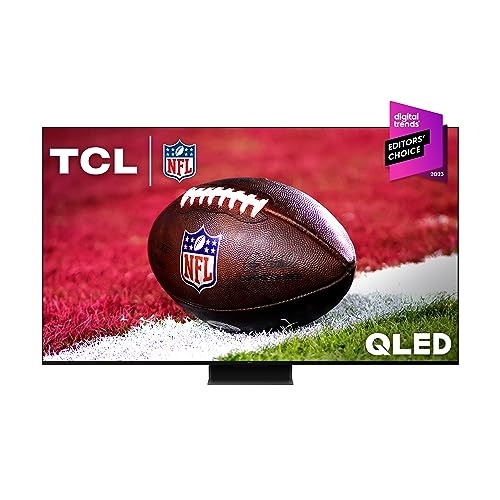
True Score
79806Experts
85237Customers
Mixed Reviews

Snapshot
Reasons to Buy
- Fantastic peak brightness
- Superb contrast ratio
- Amazing black levels
- Great screen uniformity
- Fast response time
- Great upscaling
- Wide color gamut support
- Great reflection diffusion
- Low input lag
Reasons to Avoid
- Capped to only 60Hz refresh rate
- Poor viewing angle
- No HDMI 2.1 support
- No VRR, ALLM, or eARC
- Bad out of the box color accuracy
- No HDR 10+
- Visible banding
- Full-array local dimming can be too aggressive
Specifications
Max Resolution 3840 x 2160 (4k) 
Backlight Type Full-Array Refresh Rate 60 Hz Display Type LED HDMI Inputs 4 HDR Format Dolby Vision, HDR10, HLG 
LED Panel Type Mini LED, QLED Screen size 85" 
Smart Platform Roku TV 
VRR No All Specs
Test Results
SDR Brightness (nits) 1,727 HDR Brightness (nits) 1,870 Color Gamut % (DCI P3 xy) 93.2 Response Time (ms) 11.9 Contrast Ratio (x:1) 10,257 EOTF (600 nit delta) 0 Color Gamut % (DCI P3 uv) 93.82 Color Gamut % (Rec 2020 xy) 70.05 Color Gamut % (Rec 2020 uv) 80.47 Color Gamut % (sRGB) 99.9 Color Gamut % (Rec 709) 0 Color Gamut % (BT.2020) 0 Color Gamut % (Adobe RGB) 0 Color Gamut % (BT.709) 0 Input Lag (ms) 19.1 Color Washout (Degrees) 25 Color Shift (Degrees) 25 Brightness Loss (Degrees) 35 Reflections (%) 4.9 Low-Freq Extension (Hz) 71.27 Freq Response StdDev @ 70db 4.3 Freq Response StdDev @ 80db 4.02 Weighted Total Harmonic Distortion @80db 0.061 Intermodulation Distortion @80db 1.1 EOTF (1000 nit delta) 0 EOTF (4000 nit delta) 0 All Tests
All Retailers
Our Verdict
The TCL 8 Series stands out in the RokuTV lineup with its exceptional brightness. With an SDR brightness peaking at 1727 nits and HDR brightness at 1870 nits, it offers a vivid viewing experience even in well-lit rooms, making it a great choice for anyone who enjoys daytime watching without losing out on picture quality. Between the great brightness and the versatility and ease of use of the RokuTV platform
Additionally, its color gamut coverage at 93.20% of DCI P3 xy ensures that colors are not only bright but also accurate and vibrant, though the set does struggle a bit with contrast compared to other Roku options, coming in at 10257:1. It’s still good enough for rendering dynamic and dramatic scenes, though if deeper blacks are what you’re after, it wouldn’t be your first choice.
The 8 Series does offer a decent response time of 11.9 ms, which makes it a good option for sports fans looking to set up their TV in a very brightly lit room and still enjoy a blur-free view of the action. However, the input lag is a let down for gamers hoping to reduce any delay between their inputs and the action on screen. At 19.1 ms, this delay is basically unacceptable for competitive gamers, though casual gamers are unlikely to notice it, meaning if you’re looking for a bright room TV that can also handle casual gaming, the 8 Series is a good choice.
If you’re looking to stream tons of content in a bright room, the TCL 8 Series offers up excellent brightness, the easy-to-use RokuTV platform and good response times. It works well for watching sports too, especially if there’s a lot of ambient light to fight again, but competitive gamers would be better served by the Roku Plus Series.
DID YOU KNOW 87% OF TV REVIEWERS ARE UNTRUSTWORTHY?
Our research found 28 of 210 TV reviewers can be trusted, and shockingly 1 out of 3 on Google Page 1 were fake reviews showing no proof of test claims. See our Expose and Trust List. This is why Gadget Review is committed to calculating the most accurate product scores on the web.
To do this, we give every TV review site a Trust Rating, which measures how trustworthy the site and their testing claims are. We then leverage AI & a machine learning model to combine and calculate the Trust Rating with data from experts and consumers to deliver the True Score, the web’s most accurate product quality rating.

Best Overall

Runner Up

Best Value

Best Budget

Best Mid-Range

Premium Pick
Roku Plus Series 4K QLED TV
With superior color accuracy and low input lag, the Roku Plus Series excels for gaming and color-rich content on a budget, though it’s less suitable for very bright environments.

True Score
79788Experts
861kCustomers
Mixed Reviews
 SAVE $250$649.99$399.99
SAVE $250$649.99$399.99Snapshot
Reasons to Buy
- Outstanding Roku interface and remote
- Impressive HDR features
- Plethora of high-performance inputs
Reasons to Avoid
- Mediocre image quality
- Low peak brightness
- Mediocre motion handling and some motion blur
Specifications
Max Resolution 3840 x 2160 (4k) 
Backlight Type Full-Array Refresh Rate 60 Hz Display Type LED HDMI Inputs 4 HDR Format Dolby Vision, HDR10+, HLG 
LED Panel Type QLED Screen size 55", 65", 75" 
Smart Platform Roku TV 
Sync Technology No 
VRR No All Specs
Test Results
SDR Brightness (nits) 537 HDR Brightness (nits) 576 Color Gamut % (DCI P3 xy) 95.9467 Response Time (ms) 10.5 Contrast Ratio (x:1) 42,750 EOTF (600 nit delta) 0.0064 Color Gamut % (DCI P3 uv) 0 Color Gamut % (Rec 2020 xy) 81.27 Color Gamut % (Rec 2020 uv) 0 Color Gamut % (sRGB) 0 Color Gamut % (Rec 709) 95.44 Color Gamut % (BT.2020) 81.3 Color Gamut % (Adobe RGB) 0 Color Gamut % (BT.709) 0 Input Lag (ms) 9.5 Color Washout (Degrees) 21 Color Shift (Degrees) 0 Brightness Loss (Degrees) 0 Reflections (%) 4.7 Low-Freq Extension (Hz) 0 Freq Response StdDev @ 70db 0 Freq Response StdDev @ 80db 0 Weighted Total Harmonic Distortion @80db 0 Intermodulation Distortion @80db 0 EOTF (1000 nit delta) 0.0063 EOTF (4000 nit delta) 0.0063 All Tests
All Retailers
- $399.99$650Save $250
Availability
In StockFree Shipping
No - $498.00$680Save $182
Availability
In StockFree Shipping
Yes
Our Verdict
The Roku Plus Series 4K QLED TV offers a more budget-friendly and accessible way to enjoy the Roku TV platform. It boasts an excellent color gamut coverage of 95.95% of DCI P3 xy, putting it ahead of the TCL 8 Series. When combined with its EOTF of 0.0064, it tracks gamma with excellent accuracy, making the TV a fantastic option for home theater enthusiasts, even with its budget price point.
However, the Roku Plus Series faces challenges in brightness compared to the TCL 8 Series. With SDR and HDR brightness levels at 537 and 576 nits, respectively, it’s not meant for anything more than moderately lit rooms. While these figures are adequate for most viewing environments, they fall short of the luminosity needed to perform well in a brightly lit room. Viewers who need to overcome strong sunlight or prioritize the HDR experience would be better served by the 8 Series.
If you’re looking for a good gaming TV, the response time and input lag,of the Plus Series is a great pick. With a response time of 10.5ms and an input lag of 9.5ms is a snappy and responsive pick for both sports fans and competitive gamers.The low input lag makes this TV an excellent option for playing fast paced games where minimizing the delay between inputs and on-screen action is key.
For a budget TV, the Roku Plus Series makes a fantastic case for itself if you’re looking to play competitive games or enjoy sports content, and it can handle home theater content with surprising grace despite the low price point. As long as you’re not trying to use the TV in a brightly lit room, the Roku Plus Series may be the better option if you’re looking to maximize versatility and value while still having access to the Roku TV OS. However, if you need to set the TV up in a bright room, the Roku Plus Series won’t be up to the task.

DON’T SEE WHAT YOU’RE LOOKING FOR?
Be sure to also read our guide to the best TV brands. Or if you have a particular use case check out the best gaming TVs, best OLED TVs or the best TV for sports. If you want something more future proofed try our guide on the best 8k TVs and consider 4K vs 8K.
If you’re looking for versatility, our guide to the best TV monitors can help you find a model that fits both work and play. And if you’ve already bought a soundbar, read our guide on how to connect a soundbar to your TV.

Our Approach to Testing The Best Roku TVs
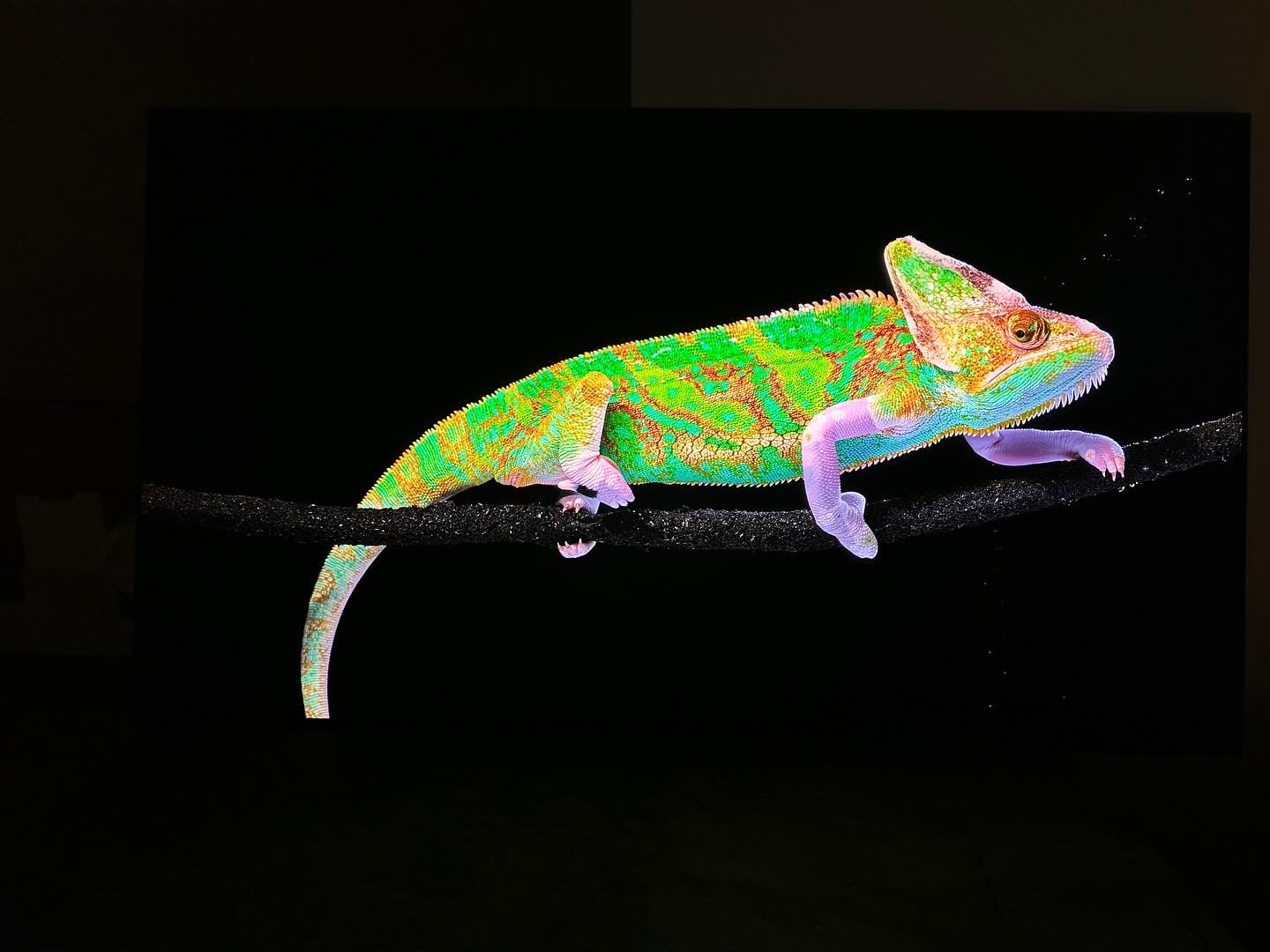
Evan Shepard/Gadget Review
We’ve redefined TV buying guides, setting us apart from any other site on the planet. Our unique approach uses a comprehensive dataset from trusted sites, focusing on key testing metrics like brightness (SDR and HDR), EOTF, response time, contrast ratio and color gamut.
We carefully gather and analyze data to ensure our recommendations meet your needs. When it comes to Roku TVs, we focus on models that offer seamless streaming and convenience, with brands like TCL and Hisense standing out for their user-friendly interfaces and access to a wide range of streaming services. From our research, we’ve selected two TVs that promise both Roku’s simplicity and exceptional picture and sound quality.
You may notice some of our graphs contain “Source: RTings”. This is to indicate that the data we’re showing off in a graph has come from a single source – because it’s the only source that actually tested the criteria and had data for it! Normally, our data is an average out of all of the various publications that test and provide data to give you a good idea of how a product is going to perform on average.
Which Criteria Matters for Testing Best Roku TVs?
By focusing on these criteria (3 required, 3 nice to have), anyone can quickly and easily compare these TVs and how they’ll perform. This helps you make an informed decision and purchase a TV that will fit into your space.
| CRITERIA | RANGE | REQUIRED | DEFINITION |
|---|---|---|---|
| SDR Brightness | 300+ nits | Yes | Assess the luminance of your display when operating in Standard Dynamic Range (SDR) mode. |
| HDR Brightness | 1000+ nits | Yes | Determine the luminance of your display in High Dynamic Range (HDR) mode. |
| Color Gamut (DCI P3 xy) | >= 90% | Yes | Evaluate the extent to which a TV can reproduce a specified spectrum of colors. |
| EOTF | 0.018 | No (nice to have) | Standard that governs how a display interprets and renders brightness and color. |
| Response Time | <=10ms | No (nice to have) | Time required for a pixel to transition from one color to another and then return to its original color. |
| Contrast Ratio | >= 10,000 | No (nice to have) | The ratio between the brightest white and darkest black that the screen can display. |
Our Trusted Data Sources
(Publication category Score is 80%+)
We looked at 210+ TV reviewers and while 24 are trustworthy (60%+ Trust Rating), we only use data from the testers that are “very trusted” which means a Trust Rating above 70%. The three we have listed below are our most trusted for TVs, along with our own in-house TV expert.
- Evan Shepard – Gadget Review
- Matthew Lopes – RTings, MuckRack
- Will Greenwald – PCMag, MuckRack, Twitter
- David Katzmaier – CNET, MuckRack, Twitter
Interested in a comprehensive analysis of our data sources? We’ve got you covered. Below, you’ll find a detailed list of every TV review website we’ve identified, organized by their respective Trust Ratings from highest to lowest. But we didn’t stop there. We’ve meticulously reviewed each publication and verified the data by checking whether the authors have bio links to MuckRack or LinkedIn. We’re committed to not only checking the facts but ensuring their veracity.
Best Roku TVs Test Data & Results
1. SDR & HDR Brightness TV Test Results
In well-lit rooms, the brightness level of your Roku TV, quantified in nits, is key to a great viewing experience. A Roku TV that doesn’t meet the brightness requirement will struggle against natural and artificial light, resulting in a dim, lackluster image. Essentially, nits measure how well your Roku TV can stand up to light interference, with higher values ensuring a sharper, more vivid display.
For standard viewing on the best Roku TV, you should look for at least 300 nits to strike the right balance between clarity and color quality in standard dynamic range (SDR) content. For high dynamic range (HDR) content, which offers richer colors and greater contrast, a minimum of 1000 nits is ideal to truly appreciate the enhanced visuals. These brightness levels are recommended to ensure your Roku TV performs well in bright settings, allowing you to enjoy your shows and movies without any loss in detail or quality. Aim for these minimums: SDR Brightness >= 300 nits; HDR Brightness >= 1000 nits for the optimal experience.
Discover the top Roku TVs, ranked from brightest to least.
Brightness
SDR: 300+ nits
HDR: 1000+ nits
Acceptable range of performance
Definition: Maximum brightness in a specified pattern size window. Most commonly measured in a 10% or 100% white window.
Units of Measurement: nits (alternatively cd/m²)
Tools to Measure: TV, luminance meter
Why It’s Important:
Brightness helps counter ambient light so that details and colors don’t wash out and get lost.
SDR Brightness (in nits, higher is better)
HDR Brightness (in nits, higher is better)
2. Color Gamut (DCI P3 xy) TV Test Results
Color Gamut
>= 90%
Acceptable range of performance
Definition: The TV’s capability to display a spectrum of colors.
Units of Measurement: % (color space coverage in percent)
Tools to Measure: Colorimeter
Why It’s Important:
Inaccurate colors compromise the authenticity of the content.
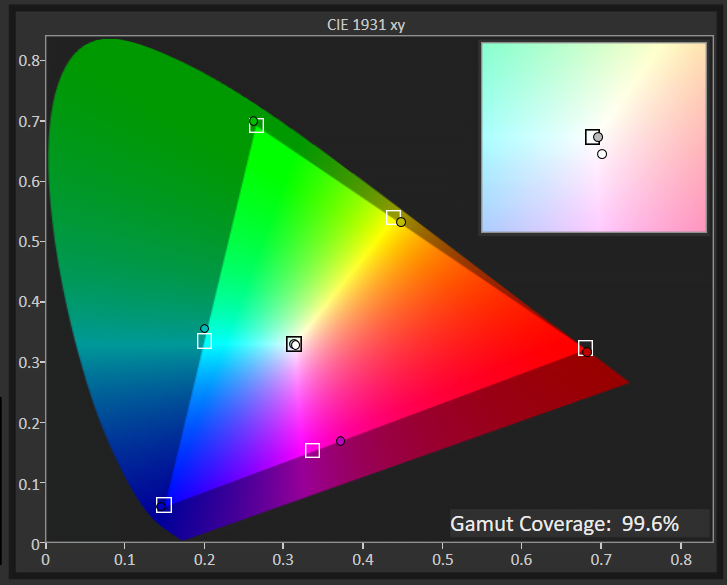
Color gamut defines the range of colors a Roku TV can reproduce, directly affecting how vibrant and true-to-life the images look. A wide color gamut in a Roku TV brings out richer, more vivid colors – from the lush greens of a garden to the bright colors of animated characters, enhancing your viewing experience to closely mimic real life.
This concept is technically measured against standards like the DCI P3 xy, a benchmark for high-quality visuals. A Roku TV covering a higher percentage of this color space can display colors more accurately and vividly.
For those who prioritize vibrant and immersive visuals, aiming for a Roku TV with a color gamut of 90% or higher on the DCI P3 xy scale is ideal. This ensures that the content you watch is as vibrant and lifelike as possible.
Below are the top Roku TVs, ordered by color gamut, all exceeding our testing criteria.
DCI P3 XY Color Gamut (as a %; high is better)
3. EOTF Test Results
The Electro-Optical Transfer Function (EOTF) plays a critical role in ensuring the content on your TV looks exactly as the creator intended. This technical feature adjusts your screen’s brightness levels, ensuring every scene, from the darkest shadows to the brightest highlights, is displayed with true-to-life accuracy.
In rooms flooded with light, a TV that nails EOTF calibration shines by preserving the intended contrast and detail in the picture despite the challenging conditions. It balances the brightness so that images remain vibrant and full of detail, unaffected by the glare of ambient light.
A TV that excels in managing EOTF offers an immersive and authentic viewing experience. It brings creators’ visions to life, accurately rendering every scene with the proper light and dark levels, no matter the lighting in your room. This means you get a consistent, realistic picture that captures the full spectrum of colors and contrasts, from the subtlest hues to the most intense explosions.
Below are all the Roku TVs on our list, ordered by EOTF, all exceeding our minimum requirement.
EOTF
< 0.018 (600 nit Δ)
Acceptable range of performance
Definition: How your TV interprets and renders the luminance data from content and translates it to be represented on screen. If EOTF/Gamma tracking is too low or too high, it will result in an over-brightened or over-darkened image from reference.
Units of Measurement: this test measures for the delta from the standard
Tools to Measure: Luminance colorimeter
Why It’s Important:
EOTF ensures that the game is displayed (color and HDR brightness) as the creator intended it
EOTF (source: rtings.com – 0 = no data exists; lower is better)
4. Response Time TV Test Results
Response Time
1ms-10ms
Acceptable range of performance
Definition: Speed at which a pixel transitions from one color to another
Units of Measurement: milliseconds (ms)
Tools to Measure: Screen, camera, test software
Why It’s Important:
A faster response time means less blur and thus more accuracy
A slow response time on a Roku all TV during fast-paced scenes is like trying to watch a thrilling movie with a foggy lens. Imagine settling in for an action-packed sequence, only to have the swift movements turn into a blur, robbing you of the crisp, clear detail you crave. This isn’t just a minor annoyance; it’s a major detriment to your viewing experience, leaving you with a picture marred by motion blur and visual artifacts.
So, what exactly is response time? It measures how quickly a pixel on your TV can change from one color to another. In the context of watching fast-moving content or enjoying dynamic scenes on a Roku TV, a low response time is crucial. A response time of 15 ms or lower is good, but if you plan on gaming on this set, aim for a response time of 10 ms or lower. At these levels, your Roku TV ensures smooth transitions and sharp visuals, making every scene come to life without any distracting blurs or delays.
Below are the top Roku TVs, ordered by response time.
Response Time (in milliseconds; lower is better)
5. Contrast Ratio Test Results
For Roku TV enthusiasts, a solid contrast ratio is crucial for enjoying your favorite TV shows or movies, especially in darker settings. This feature directly impacts how lifelike and dynamic the picture appears on your screen, ensuring that dark scenes are displayed with clear, crisp blacks instead of murky grays and bright scenes retain their detail without appearing washed out.
Put simply, the contrast ratio is all about the range of luminance a TV can produce, from the deepest blacks to the brightest whites. It’s what brings depth to the image, enhancing the realism of every scene. Watching a movie in the dark, for example, the difference between a TV with a poor contrast ratio and one with a high ratio is stark: the former struggles, blending shadows into a flat gray, while the latter delivers true black, making night scenes more immersive and detailed.
Ideally, a contrast ratio of 10,000:1 is what you should aim for in a Roku TV. This level of luminance variance ensures that you’re getting a picture quality that can handle the nuances of lighting in any scene, providing a viewing experience that’s both rich and engaging. Note: OLED TVs have infinite contrast ratio, indicated by “0.”
Below are the top Roku TVs, ordered by contrast ratio, all exceeding our testing criteria.
Contrast Ratio
>=10,000:1
Acceptable range of performance
Definition: Difference between the darkest black and the brightest white a screen can display.
Units of Measurement: cd/m2
Tools to Measure: Luminance meter
Why It’s Important:
A higher contrast ratio delivers deeper blacks, enhancing content definition, especially in darker rooms.
Contrast Ratio (higher is better)
Best Roku TVs: Mistakes To Avoid
- Not Considering Screen Size and Resolution: One common mistake is not carefully considering the screen size and resolution of the Roku TV. It’s essential to choose a size that fits your viewing distance and room size appropriately. Additionally, consider the resolution, such as 4K or HD, based on your preferences and the content you’ll be watching. For those seeking a premium viewing experience, high-end 80-inch TVs can offer an immersive experience, especially when considering models from top brands like Samsung. The best Samsung TVs often come with superior resolution and smart features that enhance the Roku TV experience.
- Overlooking Audio Quality: Just like with any TV, audio quality is crucial for the overall viewing experience. Some consumers may overlook this aspect when focusing solely on the streaming capabilities of Roku. Make sure to assess the built-in speakers’ quality or plan to invest in external audio devices like soundbars or home theater systems if necessary. Hisense TVs are known for their value, offering decent audio quality and a range of sizes suitable for different room settings.
- Ignoring Connectivity Options: Roku TVs offer various connectivity options, including HDMI ports, USB ports, and wireless capabilities. One mistake is overlooking these connectivity options and not ensuring that the TV has the necessary ports for your devices or supports wireless streaming protocols like Wi-Fi or Bluetooth. Check if the TV has sufficient HDMI ports for your gaming consoles, Blu-ray players, or other devices you plan to connect. For instance, check out our TCL 4 Series review, which has ample connectivity options for a budget-friendly choice, making it an attractive option for users with multiple devices.
- Not Researching Roku TV Models: Roku TVs come from various manufacturers and offer different features and specifications. A common mistake is not understanding what a smart TV is or researching and comparing Roku TV models to find the one that best suits your needs and budget. Consider factors such as picture quality, smart features, design, and customer reviews before making a decision. Additionally, figuring out how to turn off subtitles on a TV can vary from one Roku TV model to another, so it’s beneficial to look into each model’s ease of use and customization options, such as the best TCL TVs, known for their user-friendly interface.
The Best Roku TVs Tests Compared
Product |
True Score
|
SDR Brightness
|
HDR Brightness
|
Color Gamut
|
EOTF
|
Response Time
|
Contrast Ratio
| |
|---|---|---|---|---|---|---|---|---|
| 79 |
|
|
|
|
|
| |
| 79 |
|
|
|
|
|
| $399.99 $650 $250 |


